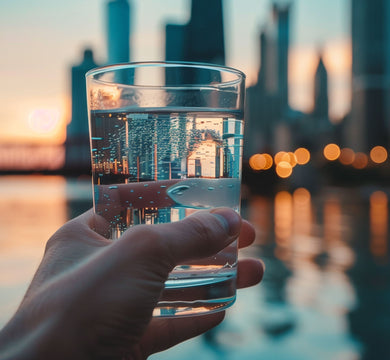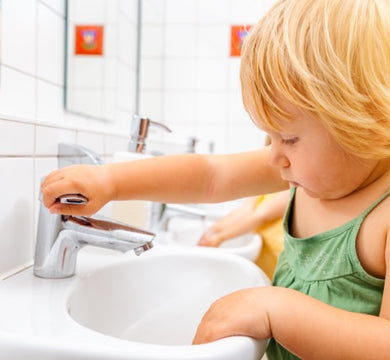Why Your Water Might Still Contain Lead — Even After Treatment
Most people assume that if their water is “treated,”at the water treatment facility, it must be safe to drink.
And in many ways, that’s true — your water company works hard to ensure the water leaving their treatment facility is clean and lead-free.
To help protect that water as it moves through miles of aging pipes, many utilities add a food-grade additive called orthophosphate. This corrosion control method is designed to coat the inside of pipes and create a protective barrier — one that helps prevent lead and other metals from leaching into the water.
It’s smart. It works. But it only works if the water keeps moving.
The Problem Isn't at the Plant — It’s in the Pipes
Even when water leaves the treatment facility in great condition, it still has a long journey before it reaches your faucet. And along the way, it travels through public service lines, older municipal infrastructure, and the private plumbing inside your building or home.
If that water sits still for too long — overnight, over the weekend, or during periods of low use — it becomes stagnant. That stagnation can break down the protective barrier created by orthophosphate, allowing lead to leach into the water from old pipes.
This means your water may start out clean…
…but by the time it reaches your tap, it could be carrying lead.
What Is Orthophosphate — And Why Does It Matter?

Orthophosphate is a type of phosphate compound that’s added to drinking water in small amounts. When water is flowing consistently, orthophosphate interacts with pipe materials to form a stable, protective layer. This layer helps prevent corrosion — and in systems with older infrastructure, it can drastically reduce the risk of lead exposure.
It’s considered one of the most effective and affordable forms of corrosion control, and it’s used by many water systems across the U.S. (though not all — some use other methods like pH and alkalinity adjustment).
The challenge isn’t whether orthophosphate works — it does.
The challenge is that its protection depends on movement. And in most buildings or homes, water sits.
Stagnation: The Silent Risk in Schools, Homes, and Offices
Water stagnation happens every day — in classrooms that aren’t used, in office wings that stay empty, or in homes that go untouched for even a few days.
Without movement, the orthophosphate coating can deteriorate. That creates ideal conditions for lead to leach from plumbing materials — especially in buildings with outdated internal systems.
This is where the risk often hides:
Not in the city’s infrastructure. Not in the treatment plant.
But inside the building itself.
Why Filters and Manual Flushing Aren’t Enough

To address this, many schools and facilities turn to manual flushing or install filters at select faucets. But both solutions have serious limitations:
Manual flushing requires someone to physically turn on faucets each day — often across dozens or hundreds of fixtures. It’s inconsistent, time-consuming, and hard to maintain.
Filters are a point-of-use solution — they work at one outlet, not the whole system. They also require regular maintenance and replacements.
These methods are reactive. And they don’t address the root issue:
Water sitting still in pipes, losing its protective chemistry.
How Noah Keeps the System Moving — And Safe

At Noah, we designed a system that ensures water doesn’t sit long enough to become a problem.
Our technology automatically flushes stagnant water from building plumbing on a consistent, programmable schedule — keeping the water fresh, the orthophosphate coating intact, and the risk of lead exposure drastically reduced.
We’ve already seen success in Chicago Public Schools, where our system helped protect students and staff from exposure while reducing the operational burden on facilities teams. Noah helps bridge the gap between what water treatment facilities can control — and what happens inside the buildings they serve.
This isn’t about replacing orthophosphate.
It’s about making sure it can do its job.
Final Thoughts: Water Safety Doesn’t Stop at the Treatment Plant

Corrosion control starts at the municipal level — but it doesn’t end there.
Even with clean, treated water and modern additives like orthophosphate, there’s still a hidden risk inside our buildings if water isn’t moving. And when that risk involves something as serious as lead, it’s worth taking proactive steps.
At Noah, we’re here to keep water moving — and people protected.


